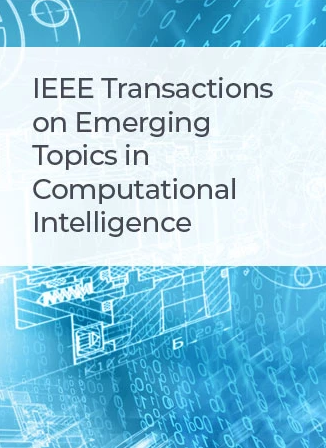基于动态时空网络预测重要区域的全市人流量
IF 5.3
3区 计算机科学
Q1 COMPUTER SCIENCE, ARTIFICIAL INTELLIGENCE
IEEE Transactions on Emerging Topics in Computational Intelligence
Pub Date : 2024-04-10
DOI:10.1109/TETCI.2024.3372420
引用次数: 0
摘要
全城人流预测是交通控制、风险评估和公共安全方面的一个重要问题,尤其是在关键区域。然而,城市的巨大规模和多个区域之间的相互作用使这一问题更具挑战性。此外,它还受到时间紧密性、周期和趋势特征的影响。此外,地理信息和元特征(如一天中的时段和一周中的天数)也会影响时空相关性。同时,不同地区之间的影响也会随时间发生变化,这就是所谓的动态相关性。我们主要研究如何同时对重要特征和动态空间相关性进行建模,以提高预测精度并简化问题。为了预测关键区域的人流,我们提出了一个分两步走的框架。首先,利用网格密度峰值聚类算法设置时间衰减系数,从而选择关键区域。然后,通过图嵌入来模拟地理信息对时空相关性的影响,并通过图卷积神经网络来表示不同时间特征的影响。此外,我们还利用多关注机制来捕捉动态时空相关性。在两个真实数据集上的实验结果表明,我们的模型能很好地平衡时间复杂性和预测准确性。其准确率比其他基线模型高出 20%,预测速度也优于大多数模型。本文章由计算机程序翻译,如有差异,请以英文原文为准。
Predicting Citywide Crowd Flows in Critical Areas Based on Dynamic Spatio-Temporal Network
Citywide crowd flow prediction is an important problem for traffic control, risk assessment, and public safety, especially in critical areas. However, the large scale of the city and the interactions between multiple regions make this problem more challenging. Furthermore, it is impacted by temporal closeness, period, and trend features. Besides, geographic information and meta-features, such as periods of a day and days of a week also affect spatio-temporal correlation. Simultaneously, the influence between different regions will change over time, which is called dynamic correlation. We concentrate on how to concurrently model the important features and dynamic spatial correlation to increase prediction accuracy and simplify the problem. To forecast the crowd flow in critical areas, we propose a two-step framework. First, the grid density peak clustering algorithm is used to set the temporal attenuation factor, which selects the critical areas. Then, the effects of geographic information on spatio-temporal correlation are modeled by graph embedding and the effects of different temporal features are represented by graph convolutional neural networks. In addition, we use the multi-attention mechanism to capture the dynamic spatio-temporal correlation. On two real datasets, experimental results show that our model can balance time complexity and prediction accuracy well. It is 20% better in accuracy than other baselines, and the prediction speed is better than most models.
求助全文
通过发布文献求助,成功后即可免费获取论文全文。
去求助
来源期刊

IEEE Transactions on Emerging Topics in Computational Intelligence
Mathematics-Control and Optimization
CiteScore
10.30
自引率
7.50%
发文量
147
期刊介绍:
The IEEE Transactions on Emerging Topics in Computational Intelligence (TETCI) publishes original articles on emerging aspects of computational intelligence, including theory, applications, and surveys.
TETCI is an electronics only publication. TETCI publishes six issues per year.
Authors are encouraged to submit manuscripts in any emerging topic in computational intelligence, especially nature-inspired computing topics not covered by other IEEE Computational Intelligence Society journals. A few such illustrative examples are glial cell networks, computational neuroscience, Brain Computer Interface, ambient intelligence, non-fuzzy computing with words, artificial life, cultural learning, artificial endocrine networks, social reasoning, artificial hormone networks, computational intelligence for the IoT and Smart-X technologies.
 求助内容:
求助内容: 应助结果提醒方式:
应助结果提醒方式:


